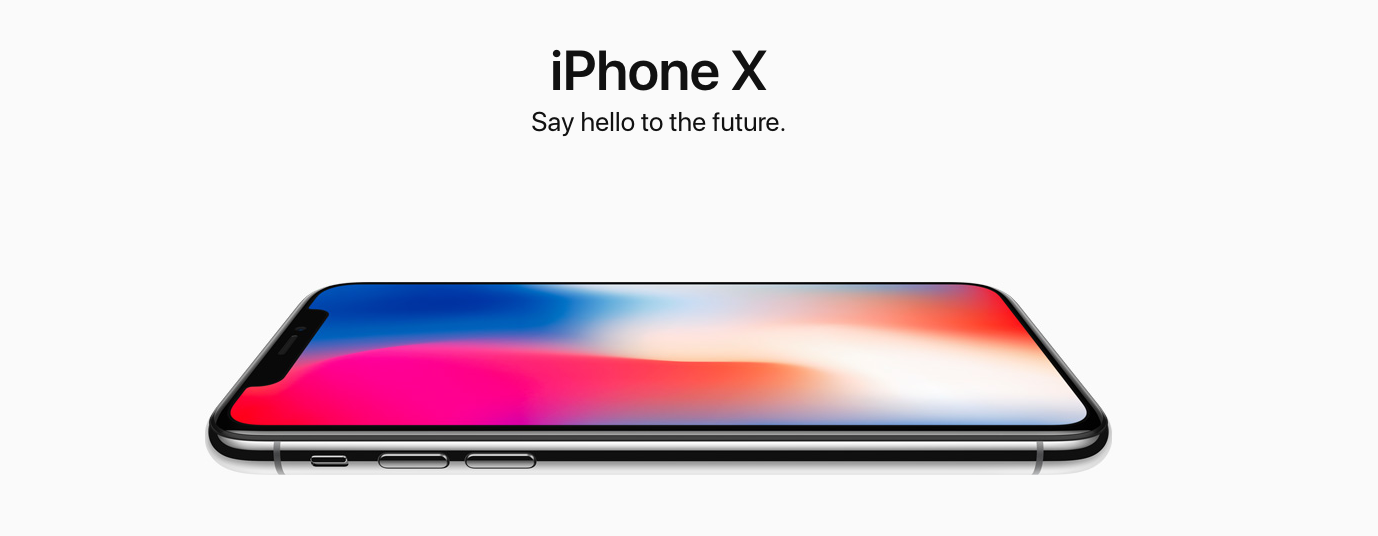Apple sees its future in your face. The new iPhone X release features facial recognition technology that takes your selfies to a new level. The future of tech is banking on your face. What’s the catch? Your privacy, of course.

Apple’s Big Reveal:
Apple’s reveal of the new iPhone X energized the tech community this week. Sporting features including a sturdy glass design, an improved camera and the removal of the home button, the iPhone X placed itself in a new premium category of tech. Starting at $999, the new iPhone X has capabilities that rival that of a MacBook and, more notably, takes a big leap into the facial recognition arena. Apple isn’t alone in its quest to make the selfie the gateway to the future. Facebook, MasterCard and even the U.S. Government are learning new ways to recognize you. Users could have concerns with the growing use of this seemingly innocent tech upgrade.
What is Apple’s Facial ID Technology?
Watch how Tim Cook’s team demonstrated the new facial recognition technology (with a slight hiccup) at its media blitz this week:
Your face is to Apple’s Face ID what your finger was to Touch ID. With Face ID, the phone’s True Depth camera, with infrared and 3D sensors, projects and analyzes more than 30,000 dots to create a map of your face. Simply look at your phone, and it will recognize you and give access to your phone in seconds. It eliminates the wasted additional seconds required to type in a numeric code and the effort of pressing the home button. In addition to unlocking your phone, your face will also be used to authenticate you and used to pay with Apple Pay, in the same way your fingerprint did. The software can recognize your face even if you get a haircut or take off your glasses. It can even detect your face in the dark. In theory, the Cupertino-company believes this is a far more secure way to protect your phone, with a 1 in 1,000,000 chance of illegitimate break in, compared to a 1 in 50,000 chance with Touch ID. Samsung also has a similar feature in its newest device, as well, though software has shown critical holes. A recent University of North Carolina study that showed that simply by using Facebook photos, a 3-D virtual model of a person’s face could be built that effectively beat 5 different facial recognition applications.
These smarts are already in play in other parts of our tech lives, like in Google Photos and Apple iPhoto. Both have been using facial recognition technology to scan your photos to identify people and create different ways of sorting through your image collections. The iPhone X takes things to the next level.
How Your Selfies Can Sell More Ads:
Apple isn’t alone in banking its future on your mug shot. Retailers use it already to identify shoplifters. MasterCard has capabilities that allow a selfie, not a password, to authorize a purchase. Facebook and Google are active in this arena, as well, lobbying hard to defeat laws that restrict facial scanning. Reading up on the legal complexity of this issue is fascinating. There are no federal laws governing the specific use of this increasingly powerful and controversial technology.
Facebook is so sophisticated in this area that it can recognize you even when your face isn’t visible in a photograph, based simply on your clothing, hair, posture and other features. Why is this so important to technology companies? By knowing you on the inside and out, companies like Facebook and Google can target ads more precisely because they know whether you have your ears pierced, can gauge your t-shirt size and can guess your favorite color. Then, it serves up ads targeting only you. It is a more fine-tuned ad targeting method. Microsoft has patented a billboard that can recognize you as you walk by and serves ads personalized to your purchase history. For companies like Apple, it has said it would not store or share critically identifiable information. But, we know the camera’s sensors will be used by apps like Snapchat.
Convenience or Confidentiality?
It is easy to imagine some scary scenarios that could test the safety of facial recognition. As a recent Wired piece points out: “it’s very hard to hide your face from someone who wants to coerce you to unlock your phone, like a mugger, a customs agent, or a policeman who has just arrested you. In some cases, criminal suspects in the US can invoke the Fifth Amendment protections from self-incrimination to refuse to give up their phone’s passcode.”
If a few extra seconds to type in a password doesn’t add up to much in your life, consider skipping the iPhone X. The new iPhone 8 has many new upgrades and keeps Touch ID. If you must have the iPhone X, then experts say to limit what you use Face ID for on your phone. You can, for example, use it to unlock the phone but stop there.
As we have seen in the past, when Apple makes a shift, expect it to stick. You might be able to avoid interacting with facial recognition in this release of Apple products. But, like the now extinct headphone jack, missing from both the iPhone 8 and iPhone X, it may be a feature we have to learn to accept if we want to own future Apple devices.